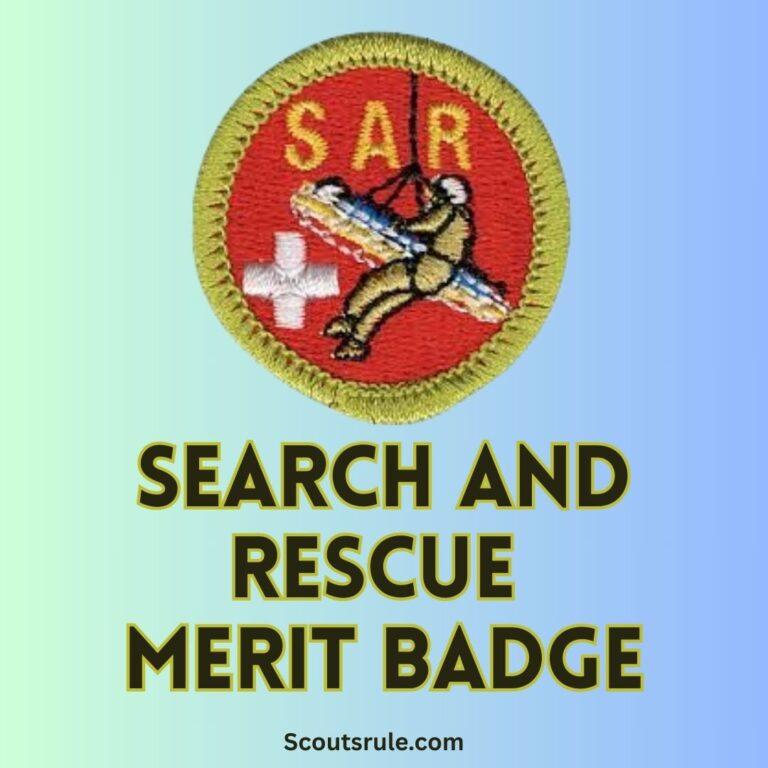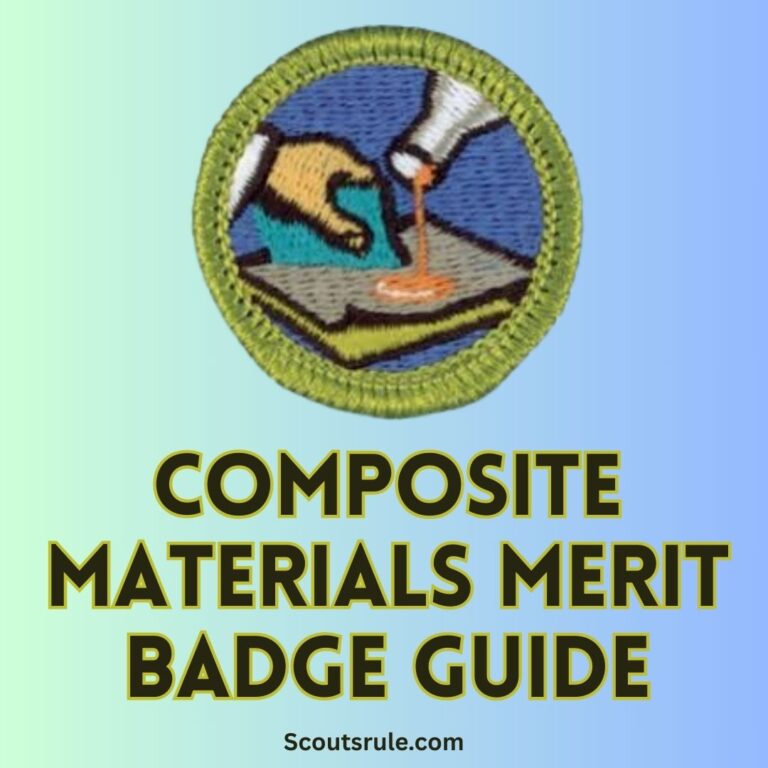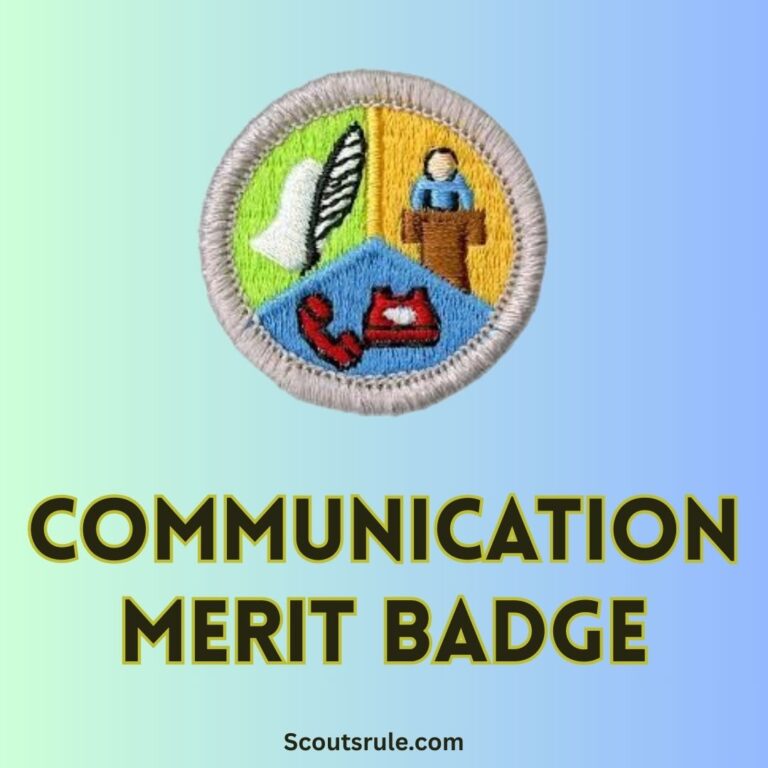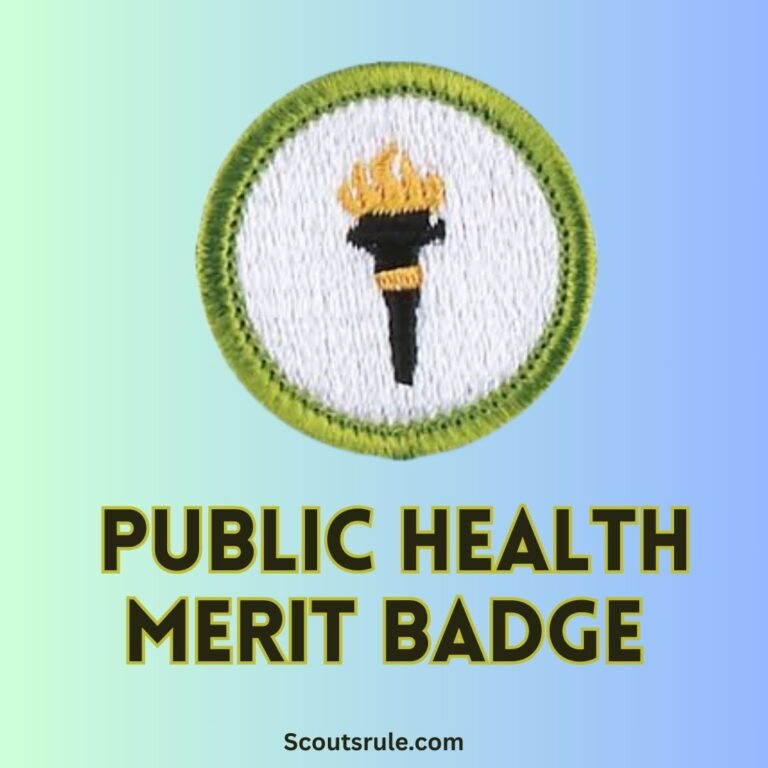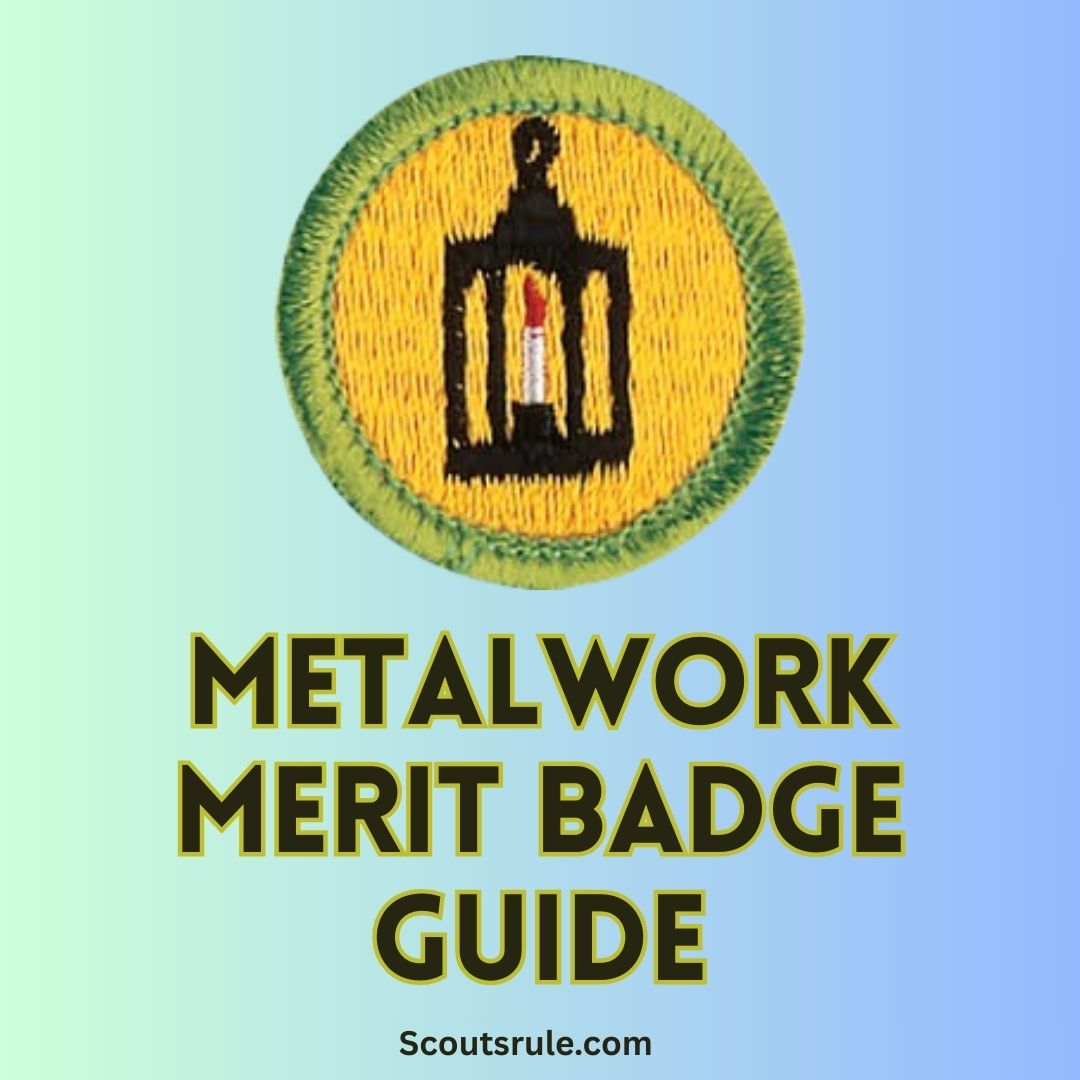
This guide is designed to help you explore the art and science of working with metal—from understanding safety practices and fundamental terminology to mastering basic techniques such as work‐hardening, annealing, and even creating a temper color index. Whether you want to pursue metalwork as a creative hobby, explore a potential career in metal fabrication or jewelry design, or simply develop new skills as you work with a versatile material, this guide will walk you through each requirement step by step, offer practical project ideas, and provide strategies for research, documentation, and self‑reflection.
Post Contents
- Introduction: The World of Metalwork
- 2. Purpose and Objectives of the Metalwork Merit Badge
- 3. Understanding the Basics of Metalwork
- 4. Safety in Metalwork
- 5. Metalworking Techniques
- 6. Practical Projects and Hands-On Activities
- 7. Career Opportunities and Industry Insights
- 8. Documentation, Record Keeping, and Presentation Strategies
- 9. Additional Tips, Resources, and Further Exploration
- Conclusion: The Lasting Impact of Metalwork
Introduction: The World of Metalwork
Metalwork is an ancient craft that has evolved from the earliest blacksmiths forging tools by hand to today’s modern metal fabrication and jewelry design. It encompasses techniques that transform raw metal into functional objects, decorative items, and works of art. The Metalwork Merit Badge challenges you to explore this captivating field by learning not only the theoretical aspects of metallurgy and metalworking but also hands‑on techniques that bring ideas to life. In pursuing this badge, you will develop practical skills, enhance your understanding of materials, and gain an appreciation for the craftsmanship and creativity required to work with metal.
Whether you are interested in traditional metalworking methods or modern techniques applied in industries, the knowledge and skills you acquire here will have applications spanning art, engineering, and manufacturing. Embracing metalwork fosters patience, precision, and problem‑solving skills that are invaluable both as a personal pursuit and as a foundation for future technical careers.
2. Purpose and Objectives of the Metalwork Merit Badge
The Metalwork Merit Badge is designed with several key objectives in mind:
- Educational Enrichment: Gain insight into the composition and properties of metal, understand metallurgical processes, and learn the terminology that defines the art and science of metalworking.
- Safety and Responsibility: Develop a strong understanding of the safety protocols, best practices, and protective measures necessary to work with metals, safeguarding yourself and others.
- Practical Skill Development: Acquire hands‑on experience in key techniques such as work‑hardening, annealing, and tempering. These processes not only refine the metal’s properties but also teach you how to manipulate materials to achieve desired results.
- Problem Solving and Creativity: Tackle challenges such as overcoming the metal’s yield point or achieving precise bends and joins through creativity and keen observation.
- Career Exploration: Explore potential career opportunities in metalworking, such as silversmithing, blacksmithing, welding, or modern industrial fabrication.
- Documentation and Reflective Learning: Learn how to document your projects, from recording safety procedures to keeping a detailed portfolio of your techniques and results.
These objectives equip you with a multi‑dimensional understanding of metalwork that blends practical experience with scientific knowledge, preparing you for both future Scouting projects and potential technical careers.
3. Understanding the Basics of Metalwork
Before you start experimenting with metal, it is essential to understand some key terms and concepts.
3.1 Defining Key Terms
- Native Metal: A metal that exists in its pure form in nature. Although rare, examples include gold and copper, which can be found in their natural state without the need for extraction from ore.
- Malleable: The property of a metal that allows it to be hammered or rolled into thin sheets without breaking. This quality is crucial for activities like shaping or forging metal.
- Metallurgy: The science and study of metals, including their extraction, refining, alloying, and treatment. Metallurgy is fundamental in understanding how different processes affect a metal’s properties.
- Alloy: A mixture of two or more metals, or a metal combined with one or more elements, at least one of which is a metal. Alloys often possess improved properties over their constituent metals—for example, brass is an alloy of copper and zinc.
- Nonferrous: Metals that do not contain significant amounts of iron. They are typically more resistant to rust and corrosion than ferrous metals. Examples include copper, aluminum, and brass.
- Ferrous: Metals that contain iron. They are typically magnetic and susceptible to rust unless treated or alloyed. Examples include steel and cast iron.
Understanding these terms lays the groundwork for deeper exploration into metal properties and the various techniques used in metalwork.
4. Safety in Metalwork
Working with metal involves risks—from sharp tools and heated equipment to the physical stress of bending metal. Safety is a fundamental aspect of your project.
4.1 Safety Rules and Precautions
- Read and Understand Safety Protocols: Before beginning any metalwork project, thoroughly review the safety rules provided in your merit badge pamphlet. These rules detail the procedures for handling tools, heated materials, and chemical treatments.
- Workshop Setup: Ensure your workspace is well‑ventilated, well‑lit, and organized. A clutter‑free and dedicated area minimizes accidents.
- Tool Handling: Always use cutting, shaping, and welding tools as directed. Never force a tool to perform beyond its capacity. Frequently inspect your tools for damage.
4.2 Protective Equipment and Best Practices
- Wear Protective Gear: Always wear safety glasses or goggles to protect your eyes from sparks or metal fragments. Use gloves when handling sharp or hot objects, and consider an apron to protect your clothing.
- Fire Safety: Keep a fire extinguisher nearby, especially when working with heated metals and open flames.
- First-Aid Preparedness: Familiarize yourself with first-aid procedures for cuts, burns, and abrasions. Keep a first‑aid kit close at hand.
- Supervision and Training: Work under the supervision of experienced metalworkers when trying out new techniques. Participating in a safe training session can save you from accidents and improve your skills.
When documenting your project, include a section that details the safety equipment you used, the precautions you took, and, if possible, any demonstrations of correct equipment handling.
5. Metalworking Techniques
The heart of the Metalwork Merit Badge is mastering practical techniques that change the properties and appearance of metal.
5.1 Work‑Hardening and Its Demonstration
Work‑Hardening Defined: Work‑hardening is the process of strengthening a metal by plastically deforming it beyond its yield point. This can be accomplished by bending or hammering the metal. The metal becomes harder and less ductile as a result.
Demonstration Process:
- Choice of Material: Select a piece of 26‑ or 28‑gauge sheet brass or sheet copper. These materials are common in metalwork and provide clear examples of work‑hardening.
- Creating a 45‑Degree Bend: Using a bending tool or by applying even pressure, form a 45‑degree bend in the metal.
- Peening: Heavily peen (hammer) along the bend line. The process increases the dislocation density of the metal, which in turn makes it harder. Record the amount of effort needed—either subjectively or with any measuring tools available.
- Documenting Changes: Keep detailed notes about the state of the unworked and work‑hardened material. It is essential to demonstrate that you have increased the metal’s hardness through deliberate physical manipulation.
5.2 Annealing: Softening Metal for Re‑Forming
Annealing Defined: Annealing is a heat treatment process used to reduce hardness, increase ductility, and relieve internal stresses in a metal after work‑hardening.
Steps Involved:
- Heating: Heat the work‑hardened piece of metal until it reaches a specific temperature where recrystallization begins.
- Cooling: Allow the metal to cool slowly, often in a controlled environment. Slow cooling helps to restore ductility.
- Comparison: After annealing, attempt to remove the 45‑degree bend created during work‑hardening. Document and note the reduction in required effort to overcome the yield point once the metal has softened.
5.3 Creating a Temper Color Index
Purpose: A temper color index is created by heat treating a piece of steel to produce a range of colors. These colors indicate the temperatures attained and help in identifying the metal’s hardness level.
- Prepare a Flat Piece of Steel:
- Select Your Material: Choose a small, flat piece of medium‑carbon or high‑carbon steel that has a uniform surface. Using a known steel sample ensures that the color changes correlate with temperature and temper conditions.
- Mark a Test Area: Use a permanent marker or scribe to designate a small area on the steel piece where you will perform your heating tests.
- Heating Process:
- Controlled Heating: Using a propane torch or a small forge, gradually heat the marked area of the steel. It’s critical that you heat slowly to observe the progressive change in colors.
- Monitor the Color Transitions: As the steel heats, document the range of colors that appear. Typically, the metal will go through stages such as straw, light gold, dark blue, and even purple or brown.
- Record Temperatures (Optional): If you have access to an infrared thermometer, note the approximate temperatures corresponding to each color stage.
- Creating the Temper Color Index:
- Sketch or Photograph Each Stage: As you achieve each distinct color, take a clear photograph or make a hand-drawn sketch. Label each image with the corresponding descriptive name (e.g., “straw”, “cherry brown”, “blue”) and any measured temperature if available.
- Explain the Significance: Write a short explanation of how these colors correlate with the strength and hardness of the metal. Explain that a change in temper (resulting from treatment such as annealing) affects the metal’s physical properties and that the color index can serve as a reference for metalworkers.
- Compile Your Index: Organize your images or sketches chronologically in a digital folder or on paper. Create a table or chart that lists the color, the approximate temperature (if measured), and the corresponding hardness or ductility characteristics.
This temper color index becomes not only a demonstration of your understanding of heat treatment techniques but also a practical reference tool for future metalworking projects.
6. Practical Projects and Hands-On Activities
Practical, hands-On experience is key to mastering metalwork. Here are some projects and activities that you can undertake to fulfill the merit badge requirements.
6.1 Project 1: Work‑Hardening Demonstration
Objective: Demonstrate your ability to work‑harden a metal piece by creating a 45‑degree bend and then peening it to increase hardness.
Activities:
- Select a suitable piece of metal (e.g., sheet brass or copper) and mark a designated section for bending.
- Use appropriate tools (e.g., vise or bending tool) to create a controlled bend at 45 degrees.
- Apply consistent peening using a hammer along the bend area until you notice an increased resistance to further deformation.
- Document the process with before-and-after photographs, sketches, and a written analysis comparing the ease of bending before and after the work‑hardening process.
- Explain what the “yield point” is and how your actions helped move the metal beyond it.
6.2 Project 2: Annealing and Re‑Forming
Objective: Show that you understand the annealing process by deciding to soften the work‑hardened metal and attempting to reform it.
Activities:
- Using your sample from Project 1, heat your work‑hardened piece uniformly until it reaches a suitable annealing temperature (this may vary based on the metal type).
- Allow the metal to cool slowly (preferably in an insulated environment) to fully relieve the internal stresses.
- After annealing, attempt to redistort the metal (e.g., try to remove or adjust the bend) and document the difference in workability.
- Record the process, including any color changes observed during heating, and reflect on the reduced effort needed to alter the metal.
6.3 Project 3: Constructing and Using the Temper Color Index
Objective: Implement the process described in Section 5.3 to create a visual and written temper color index.
Activities:
- Follow the procedure to heat a flat piece of steel in a controlled manner, documenting the color changes.
- Create a final printed or digital portfolio that includes your sketches or photographs alongside a table of corresponding temperatures (if available) and descriptions.
- Discuss your observations, the consistency of the color changes, and what they reveal about the metal’s properties after various heat treatments.
- Reflect on how this process would be useful in other areas of metalwork, such as forging or toolmaking.
7. Career Opportunities and Industry Insights
Exploring potential career paths can broaden your perspective on how metalwork skills translate into professional opportunities.
7.1 Exploring Metalworking Careers
Discussion Points:
- Craftsmanship and Artistry: Careers in jewelry design, sculpture, or custom metal fabrication require both technical proficiency and a creative eye.
- Industrial and Engineering Roles: Consider roles in metal fabrication plants, welding, machining, or assembly, where precision and efficiency are paramount.
- Manufacturing Technology: Modern industries require skilled operators for CNC machines, robotics, and automated metal processing systems.
- Trade Skills and Apprenticeships: Expertise in blacksmithing, tool making, or automotive restoration requires hands-on skills and can be pursued through apprenticeships and trade schools.
Activities:
- Research local or regional metalworking businesses, trade schools, or artisan workshops.
- Conduct interviews (either in person or via phone/online) with professionals in a field of your interest. Ask them about their daily work, challenges, and what skills they believe are critical in metalwork.
- Create a short report summarizing your findings and reflecting on which career path might best suit your skills and future aspirations.
8. Documentation, Record Keeping, and Presentation Strategies
Clear, organized documentation is essential to comply with merit badge requirements and to showcase your progress.
8.1 Organizing Your Portfolio
- Create a Binder or Digital Folder: Separate your work into distinct sections for each project and activity. Label each section clearly with titles like “Work‑Hardening Project,” “Annealing Process,” and “Temper Color Index.”
- Include a Table of Contents: List all sections and the pages or files where you can find your notes, sketches, photographs, and written reports.
- Use Visual Aids: Enhance your documentation using diagrams, photos, and charts. For instance, create before-and-after images of your metalworking projects or a chart that correlates temper colors with heat treatments.
8.2 Reflective Journaling
Maintain a regular journal where you:
- Note down challenges, successes, and lessons learned during each project.
- Reflect on the connection between theoretical knowledge and its practical applications.
- Record feedback from your mentor or merit badge counselor and describe how you implemented that feedback.
8.3 Presentation Preparation
- Final Presentation: Prepare a slide presentation or written report that summarizes your overall experience. Include:
- An introduction to your projects.
- Detailed findings from each experiment.
- Photographs and diagrams for clarity.
- Personal reflections and conclusions about what you learned.
- Practice and Review: Present your final project to your troop or family members for practice. Gather constructive criticism to refine your process and presentation skills.
9. Additional Tips, Resources, and Further Exploration
Additional Tips
- Plan and practice carefully: Ensure you schedule ample time for each project phase. Preparing detailed outlines before you begin an experiment can save time and reduce errors.
- Maintain a safe workspace: Constantly monitor your workspace for hazards. Clearly mark dangerous areas and never hesitate to ask for help or supervision when using unfamiliar tools.
- Document continuously: Don’t leave documentation until the end—record your observations and reflections in real time to maintain accuracy and detail.
- Embrace experimentation: Sometimes your project might not go as planned. Use setbacks as learning experiences and note what you would do differently in the future.
Resources
- Books and Manuals: Look for metalworking textbooks, guides on metallurgy, or trade manuals specific to your selected materials.
- Online Tutorials and Videos: Websites such as YouTube have many instructional videos on work‑hardening, annealing, and tempering metal. Look for channels hosted by professional metalworkers or reputable technical institutes.
- Local Workshops and Classes: Consider attending local metalworking workshops or classes. Community colleges and artisan guilds often offer short courses.
- Scouting Web Resources: Visit sites like Scoutles.com and ScouterMom.com for additional worksheets, tips, and success stories from other Scouts who have earned the Metalwork Merit Badge.
Conclusion: The Lasting Impact of Metalwork
Earning the Metalwork Merit Badge is more than just completing a series of projects—it’s an immersive journey into the world of materials, craftsmanship, and creative problem-solving. As you master techniques such as work‑hardening, annealing, and tempering while creating a reliable temper color index, you also develop the patience, precision, and forensic attention to detail that are essential to successful metalworking.
Through your hands‑on projects and detailed documentation, you demonstrate not just technical skill but also an understanding of how metals can be transformed from raw materials into works of art or functional tools. These skills are applicable in a range of fields, from fine arts and industrial fabrication to engineering and design.
In addition, the process of planning, experimenting, and recording your work teaches you the value of careful research, organized documentation, and reflective practice—skills that will serve you well in all areas of life. Whether your passion for metalwork evolves into a lifelong hobby, a career, or a stepping stone to further technical education, the lessons learned through this badge will empower you to innovate, persist, and create with confidence.
May your journey through the Metalwork Merit Badge inspire you to embrace both the scientific and creative sides of metalwork, and may it open doors to new ventures, deeper knowledge, and a lifelong passion for craftsmanship.
Happy metalworking—and may your dedication and creativity continue to shape a bright, innovative future!

Hi, Robin here, A former lead Scout and here I share my inspiring stories about USA Scouts, leadership, adventure, how to guides and more.

